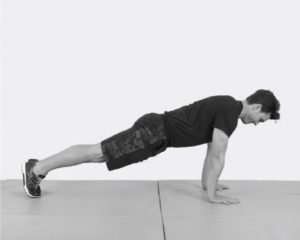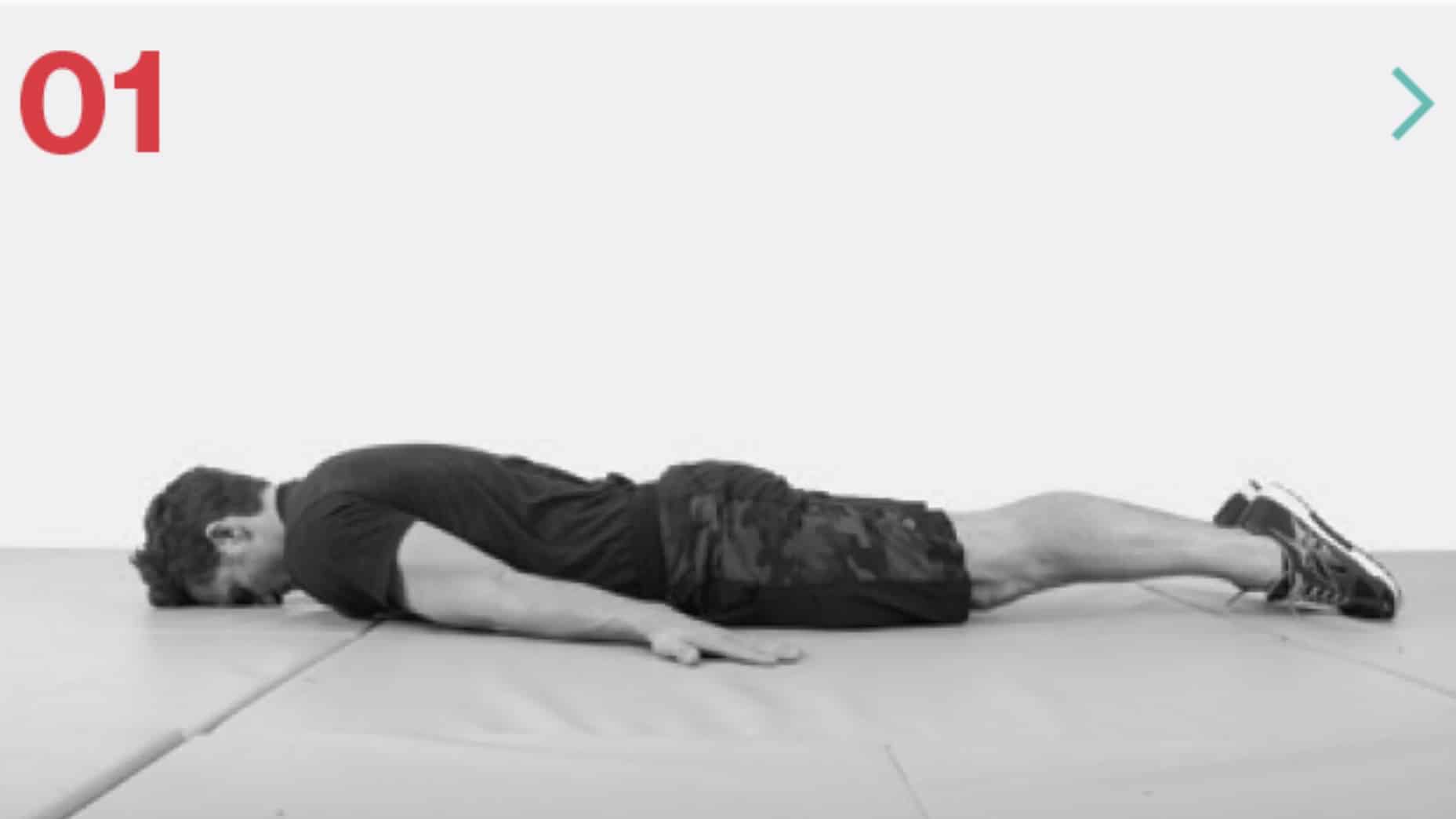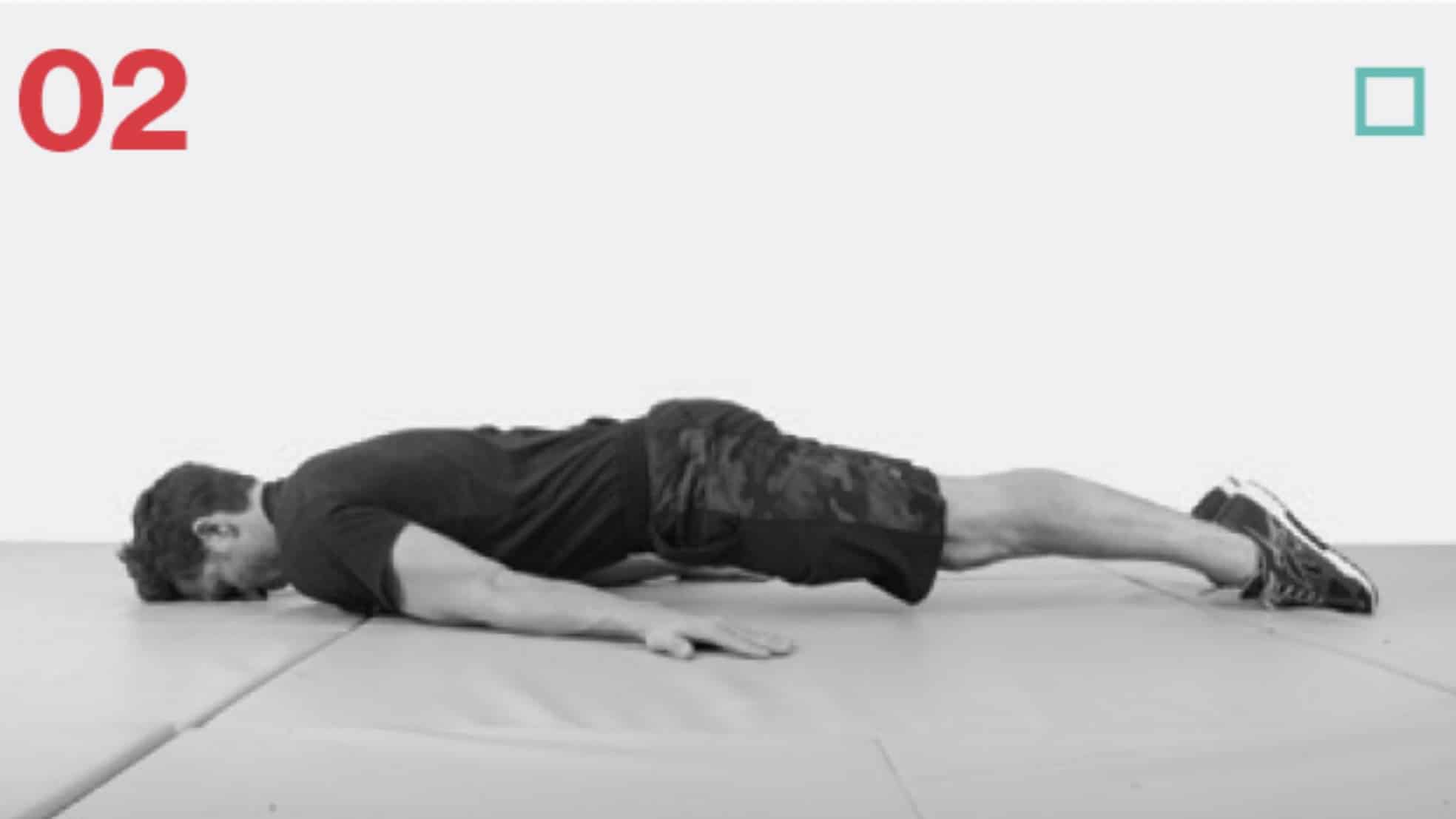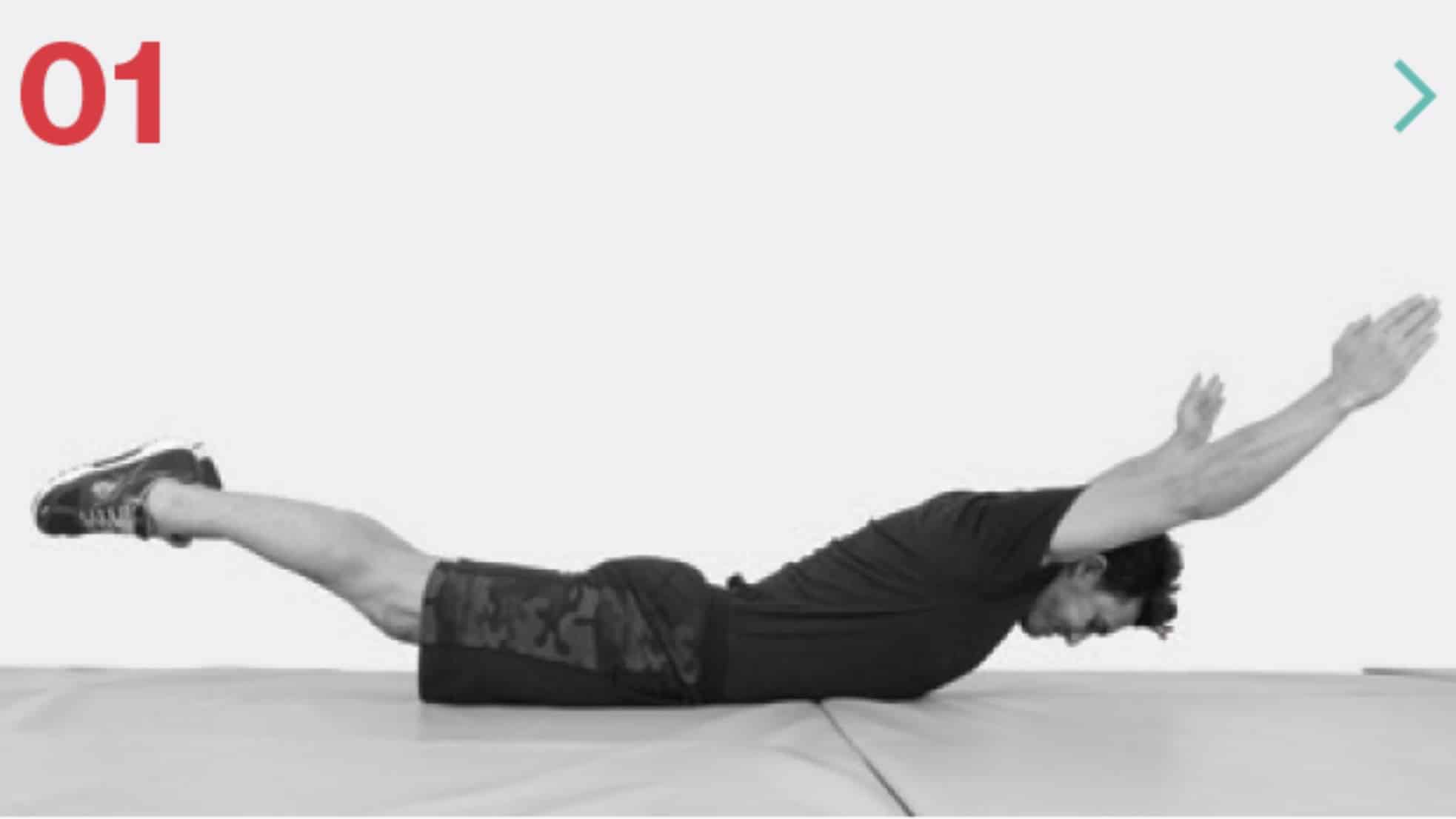A basic understanding of the hollow body position is a great foundation from which to add movement to the spine, such as the hollow rock; now let’s think a little further. While sleeping, you may be comfortable on your back, and then you perform a sit-up to get up. Similarly anytime you squat and stand back up or bend over to pick something up, your spine rotates in space to the point where it is no longer supine or upright, but is moving into a prone or facedown position. This brings us to the infamous push-up position, known as the plank in the fitness community and Chaturanga in the yoga community.
The Plank Position
 In plank position, your arms are locked out and your shoulders are right above your knuckles. Your body is a straight line from head to toes, your legs are straight, and your feet together and flexed, with the balls of your feet supporting your body and butt and belly tight.
In plank position, your arms are locked out and your shoulders are right above your knuckles. Your body is a straight line from head to toes, your legs are straight, and your feet together and flexed, with the balls of your feet supporting your body and butt and belly tight.
The plank position is important because the gravitational forces on your spine are coming from the opposite side—the front. These forces cause your lumbar spine to want to sag and extend, and you must pull your spine away from the ground and focus on squeezing your butt and pulling your belly in tight in order to neutralize your pelvis for better alignment.
As easy as this control may seem in a plank, try the prone test: pulling yourself into this position by supporting yourself with only your forehead and feet. For most people, this effort causes a noticeable deviation in the spinal position.
Prone Test
Lying facedown on the ground with your arms at your sides, lock out your legs and squeeze your butt and belly tight.

Pull your hips and belly off the ground while keeping your upper back and neck aligned with the rest of your body and adopting slight global flexion.

Going beyond the hollow body position while facing down is equally as important to begin adopting a more complete understanding on how our body moves through space. This is why going from a prone position, one can adopt an extended global shape- also called the superman position- and an extended global shape with motion- the superman rock.
Superman Rock
From the Superman position, initiate the rock by dropping your chest to the ground and driving your legs up to the sky. The leg drive facilitates staying in the Superman shape.

After you reach the top of your forward rock, hold that position until gravity takes over and starts pulling your legs down. Progressively pick your arms and shoulders off the ground in order to maintain the Superman shape as you rock backward.

Using the momentum created in the transition, allow your legs to drop to the ground. Pull your chest and arms up away from the ground, maintaining Superman position throughout the full rocking range of motion.

Even though the focus in this section has been on the lumbar spine, it is extremely important to keep your neck and head position in mind as you move, due to its effect on your relative orientation in space for movement control. The position of your head usually determines where your body is going to follow, but when your head is moving independently of your body, or with muscular tension connecting your head and neck to the rest of your body, you lose your ability to create spatial awareness, and thus you lose movement control. This is proprioception, which is the sense of the relative position of neighboring parts of the body and the strength of effort being employed in movement.
These two positions, the plank and the superman hold, are simple yet powerful ways to begin developing midline stability and higher levels of performance literally from the ground up.
Test: Holding a plank for 1 minute immediately followed by 30 seconds in a superman hold. Perform 3 times with no rest in between sets.
For more information, you can reference Freestyle the book, Page 57-58, Chapter 2, Part 1.
Watch this video on the Superman rock and bringing motor control full circle.
Contributor: Carl Paoli